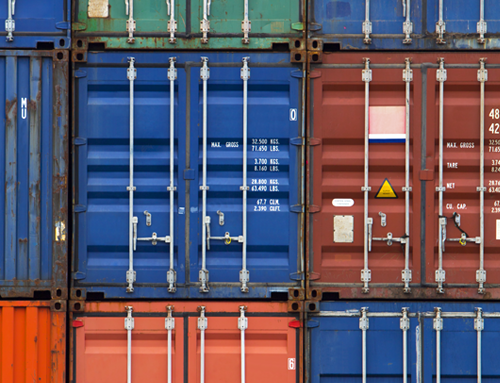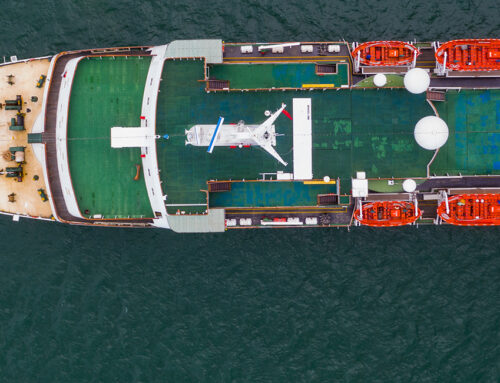The “Rotterdam Rules” is the informal name for the “Convention on Contracts for the International Carriage of Goods Wholly or Partly by Sea”, named for the city at which the signing ceremony will be held in September 2009. Negotiated through the United Nations Commission on International Trade Law (UNCITRAL) in co-operation with the World Trade Organization (WTO), and accordingly over the long period of its development has been generally known in the industry as “the UNCITRAL Convention.” The Rotterdam Rules are intended to be a new global legal regime for international multimodal transport, and so while the first draft of the convention came into existence about 8 years ago, the history of this project is somewhat longer.
A Brief History of International Transport Law
The law of carriage of goods by sea is often said to be the oldest body of international law, with known codes governing the Mediterranean trade dating to the time of the dominance of the Phoenicians, 1000 years BCE. For our purposes, however, the first major milestone comes in 1924 when the Hague Rules were created. Along with the amendments agreed to at Visby in 1968, they remain the most widely adopted international law for carriage of goods by sea. Many of the Hague principles were adopted into US law in 1936, but the United States did not agree to the Visby amendments and their domestic law has diverged further since then.
Although the Hague-Visby system remains the dominant standard, it has survived in spite of several commonly-cited dissatisfactions. In general, the system was seen as being carrier-friendly: Carriers benefit from a large number of exceptions and defences, including the controversial ‘error in navigation’ defence; can strictly limit their liability; and can enforce fairly short notice and limitation periods.
In addition to particular complaints with the regime, it more generally failed to keep up with the international transport industry. For example, it applies only to carriage of goods by sea under a bill of lading: this provision alone prevents the regime from accommodating different forms of waybill, including electronic forms, and from responding to the advent and now dominance of multimodal transport, in which the ocean portion cannot be easily disentangled.
Finally, as noted earlier, in spite of broad adoption there was and continued to be a fracturing of domestic law from the regime, with the absence of the United States particularly damaging to the desired international conformity.
In 1968 negotiations began at UNCITRAL on what would become known as the Hamburg Rules, and the development and content of those Rules has been often described and are beyond the scope of this discussion. It is sufficient to note that while these negotiations resulted in the signing of a document ten years later in 1978, the Hamburg Rules were never broadly adopted by the world’s major trading nations. This led to further fragmentation in the international law, and the failure of the Hamburg Rules was a significant set-back to the international effort to modernize the rules governing international transport.
It would be almost twenty years before UNCITRAL would return its attention to the project of modernizing the legal regime governing international transport. A further effort was proposed in 1996 and in 2001 the Working Group began its work on the first draft. In 2008 the draft Convention was adopted, first by UNCITRAL and then by the General Assembly, and the signing ceremony is currently scheduled for September 2009. But will these Rules be a new Hague, or a new Hamburg?
From Diplomacy to Enforcement
To understand how a convention that is adopted by the United Nations can still fail to become the international standard it is important to understand the process of negotiation and adoption.
First, it is important to recall that national delegations each come with their own agenda. The carrier-friendly Hague Rules were created largely by the wealthy and powerful nations with large navies and merchant fleets: many of those nations are still the bases for the large shipping lines and they retain an interest in protecting those industries; shipping nations generally are interested in increasing limitation amounts and removing defences. Overall, however, the diplomats are seeking an agreement that will be acceptable to all or most parties and that will be adopted as the new international regime. In seeking such a compromise they must at times trade-off specific aspects of an agreement they think would be ideal in exchange for an agreement that will be an improvement over the present regime.
Under Article 94 the Convention comes into force one year after the date of deposit of the 20th ratification instrument. So what is the significance of the September 2009 signing ceremony? It is in fact almost entirely ceremonial. While it is sometimes suggested that signing serves to indicate your national intention to be bound by the instrument, the fact remains that it is the legislatures (or similar bodies) of the individual States that have the authority to adopt laws for their nation. Not even the President can legally bind his country to a Convention by executive action, as Bill Clinton’s signature on the Kyoto treaty amply demonstrates.
Significant discontent remains on the part of many nations that negotiated and voted for adoption of the convention at UNCITRAL and the General Assembly. In particular, as will be discussed later, the ‘freedom of contract’ provisions are perceived as having been built into the regime at the insistence of the United States delegation, and many delegations ‘held their noses’ and agreed to it as the price of a convention that would at last reunify US law with international law. It is far from certain that their legislatures will accept this as an acceptable trade-off, and there are of course a minority of diplomats involved in the development of the Convention that remain vocally opposed to its adoption.
So, while the diplomats have strained and laboured over ten years to create a document that can be accepted as a new international legal regime, it is only when the individual national legislative bodies ratify the convention into domestic law that States bind themselves as parties to the convention. And, while the convention will come into force as between States Party one year after the 20th ratification, the convention will only become a global standard if the number ratifying includes a preponderance of the world’s trading nations. At the time of writing, this remains far from certain.
[Ed Note: This is part 1 in a 3 part series, excerpted from a larger paper by the author and which formed the basis of remarks given at the Annual General Meeting of the Canadian International Freight Forwarders’ Association at Montreal on 13 May 2009.]




